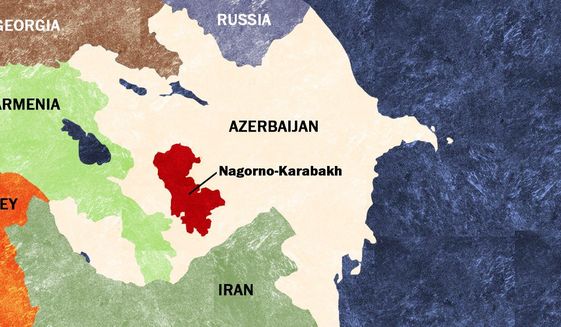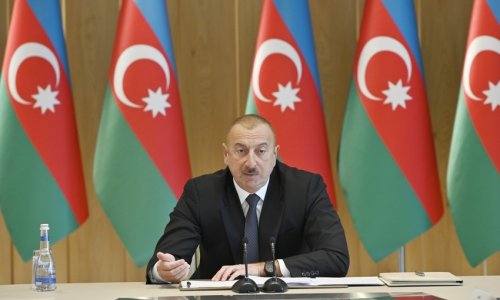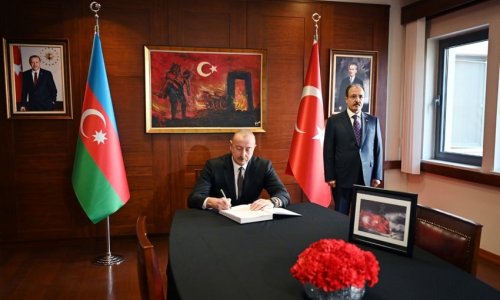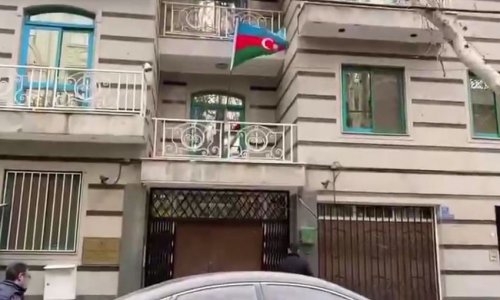By Alexander Murinson
Nagorno-Karabakh is an unhealed wound in the very psyche of Azerbaijan.
Emerging as a result of an interethnic war of secession in a region of the Soviet Azerbaijan during the collapse of the Soviet empire, it is one of the bloodiest conflicts in the post-Soviet space. Between 1992 and 1993, as the result of hostilities, Armenians expanded their occupation of the regions outside of the Nagorno-Karabakh proper, namely, Khodjaly, Kelbajar, Agdam, Fizuli, Jabrail, Zangilan and Lachin.
The bloody war produced thousands of refugees on both sides (far and away, the larger refugee population numbering nearly 1 million on the Azerbaijani side) and an inescapable pool of tears and mutual feelings of hatred and search for revenge. The internationally recognized International Crisis Group concluded that the war, in fact, created one million of refugees, who to this day exist as internally displaced persons in Azerbaijan. The conflict was "frozen” by the cease-fire agreement signed in Alma-Aty in 1994.
Although mutual accusations are only natural in any interethnic conflict, particularly one such as this marked by extreme violence and disproportionate use of force, what remains is the incontrovertible fact that it was the Armenian side which was the aggressor. Armenia, today, continues its illegal occupation of the territory recognized by international law as the sovereign territory of Republic of Azerbaijan.
The knee-jerk reaction by the multitude of Armenian sympathizers on the Capitol Hill may be inclined to crying "foul,” but quotations from pertinent United Nations resolutions shed truth and light on the issue and separate the facts from the propaganda:
U.N. Resolution 822 of April 30, 1993, "calls for the cessation of hostilities and withdrawal of local occupying forces troops (in this case, the "local occupying forces” refers to the Armenian forces-ABM) from Kelbajar district following its occupation on April 3, 1993.
United Nations 853 of July 29, 1993, "demands the immediate cessation of all hostilities, calls on withdrawal of local Armenian troops from Agdam district of Azerbaijan occupied on June 23, 1993 and reaffirms U.N. Resolution 822.”
Enter the recent judgment in the case "Chiragov and others v. Armenia” on 16 June 2015 in the European Court of Human Rights (ECHR).
Emerging from an unexpected quarter, the European Court’s ruling, the most definitive statement based on international law to date, made Armenia culpable as the aggressor and the "occupier” of Azerbaijani lands. A ruling by such an institution as the European Court of Human Rights, which cannot be suspected of favoring Azerbaijan, finally confirmed and took away any question that Armenia, in fact, is the culprit in the case of Nagorno-Karabakh occupation.
In this case, a group of former Azerbaijani residents of Lachin filed a lawsuit in the ECHR with a single goal: to return to their homes and property, after having been forced by Armenians to leave in 1992. The Court ruled: "[t]here had been violations on all accounts of the complaint (violations of several articles of the European Convention on Human Rights, on protection of property, of right to respect for private and family life, of right to an effective remedy).” But most importantly, the court’s ruling dismissed several objections put forward by the government of Armenia, including the one that this country didn’t have effective control over the territory of Nagorno-Karabakh and the surrounding territories, and thus lacked jurisdiction. According to Yerevan, Nagorno-Karabakh is a sovereign state called "NKR.” The European Court of Human Rights produced a definitive conclusion in that case: "Armenia thus exercised effective control over Nagorno-Karabakh and the surrounding territories.”
Azerbaijan justifiably responded to this ruling with calls for an immediate withdrawal of occupying forces. In fact, the ministry of foreign affairs of Azerbaijan published a statement, saying among other things: "Consequently, Armenia is under the obligation to withdraw immediately, completely and unconditionally its armed forces from these territories.”
Armenia’s response in their official statements was to disparage and attempt to humiliate the European Court. Foreign Minister Edward Nalbandian said that "the negotiations on the Nagorno-Karabakh conflict settlement are not conducted within the framework, under the umbrella, or through the mediation of the European Court of Human Rights” and that "the Co-Chairmanship of the OSCE Minsk Group is the only internationally mandated format dealing with the resolution of the issue.”
It is, indeed, a conundrum when one nation, in this case Azerbaijan, plays by all the rules, seeks remedies to their grievances in a court of law, even repeatedly offers equitable peace and the other, Armenia, continues to act as a rogue nation, lawless, turning their proverbial noses up at international institutions, international courts and the rule of law.
What accounts for Armenia’s hubris and blatant disregard for the rule of law? Could it be that Armenia feels emboldened by the ever-present backing of the mullahs in Iran? Could it also be that Armenia lost its sovereignty years ago and now exists as a vassal state of the Russian Federation and that to adhere to any ruling of the European court would open Russia to lawsuits related to its aggression in Ukraine and Eastern Europe?
In a perfect world, certain members of Congress and the Obama administration (you know who you are) would ask these questions. The European Court of Human Rights certainly gave you a head start.
• Alexander Murinson, of the Begin-Sadat Center for Strategic Studies, Bar-Ilan University, is the author of "Turkey’s Entente with Israel and Azerbaijan: State Identity and Security in the Middle East and Caucasus.” (Routledge).
(The Washington Times)
www.ann.az
Follow us !











